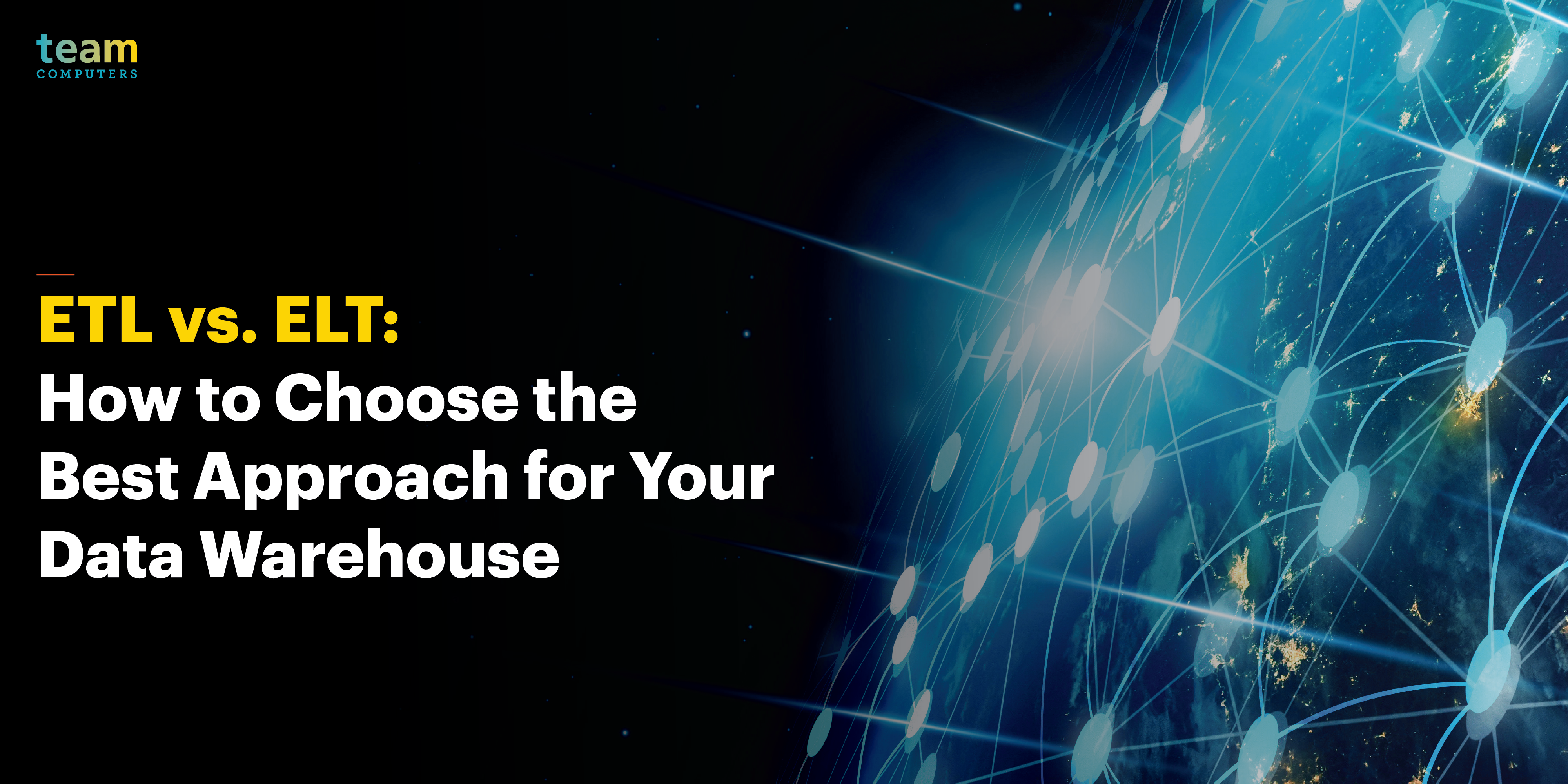In the increase in the modern digital world, the need for data has increased exponentially. Organizations these days are engaged in collecting, organizing, and processing millions of raw data inputs and transforming them into valuable pieces of information while minimizing the chances of data breaches. Adequate data processes boost an organization’s profit upto 8-10%. The sudden explosion of the data has put a greater strain on the data warehouse architecture. Every day, organizations engage in different types of large-volume data, such as sensors, social media, customer behavior, and big data, making the process even more difficult.
If your organization holds a data warehouse, the chances are high that you might be using the extract, load, transform (ELT) or extract, transform, load (ETL) data integration method. Experts believe that ELT and ETL are two of the most significant and popular ways to collect, store, and interpret data from several sources. These are further stored in the data warehouse, which employees later access.
As compared to ELT, ETL has been here for a longer time. It is a traditional method of analytics and data warehousing. However, with the introduction of the latest technologies, ELT has evolved into a bigger and more advanced name.
What do you think is the difference between ELT and ETL? Do “T” and “L” make such a huge difference? Get to know all of this here!
Introduction to extract, transform, load or ETL
In simple terms, ETL is a traditional data integration approach. It refers to extracting, transforming, and loading the work as an intermediary process. ETL is responsible for transferring data from one data source to the target ed destination.
Introduction to extract, load, transform, or ELT
As compared to ETL, ELT is a newer and more advanced version. The initial stages of both ETL and ELT work similarly. However, once the data comes in the pipeline, it can be loaded into a data warehouse. Unlike the traditional system, there is no need to process or transform data before stepping onto the loading stage.
Difference between ETL and ELT
In ETL, the data is extracted or generated from many sources, including CRM or ERP systems. It is transformed through several calculations, and then updated in the data warehouse, also called the target database. ETL tools work exceptionally well with intricate or complex data.
In the case of ELT, analysts extract the data in the initial stage. Next, the data is fully loaded into the target database, which is later transformed within the targeted database. As a result, the difference between ETL and ELT is not only about the order of their actions; other factors also greatly determine their actions.
Here are the primary differences between ETL and ELT:
- Size of the data
One significant difference between ETL and ELT is the data size, or the total amount of data that can be stored and managed. The ETL warehouse works well with smaller datasets, whereas the ELT warehouse is ideal for handling a larger amount of data. - Data loading time
ETL and ELT infrastructures are different from one another when it comes to the total waiting time. Data loading time refers to the time taken to transfer raw data into the targeted warehouse. ETL is time-consuming, whereas ELT is a better option as it supports unstructured data. - Data analysis time
Another major difference is the total data analysis time required to perform the analysis. Since data in the ETL model is found in a transformed form, it can be analyzed without any significant delays. However, in the case of ELT, the data is not converted. As a result, it is a time-consuming process that increases the overall waiting time. - Compliance
In 2020, cyber-attacks will affect nearly 155.8 million individuals in the US. This shows the emergence to follow data privacy regulations such as CCPA, GDPR, HIPAA, and others; as a result, compliance is an essential aspect to look out for when choosing a top analytics partner in India. When compared, ELT is a better option as it makes data more vulnerable to security while minimizing the risk factors. - Transformation process
One critical difference between ETL and ELT is the overall transformation process. On the one hand, where the ETL framework transforms the data before it starts to load, ELT tools fail to load data soon after it is extracted. The data is loaded in the warehouse. Data analysts choose the information they need to transform before the analysis.
Conclusion
Both ELT and ETL are advanced approaches; however, when compared to ELT, ETL is a bit outdated and can be easily replaced by evolving cloud technologies. If you’re looking for a top warehouse partner in India, choose us!
